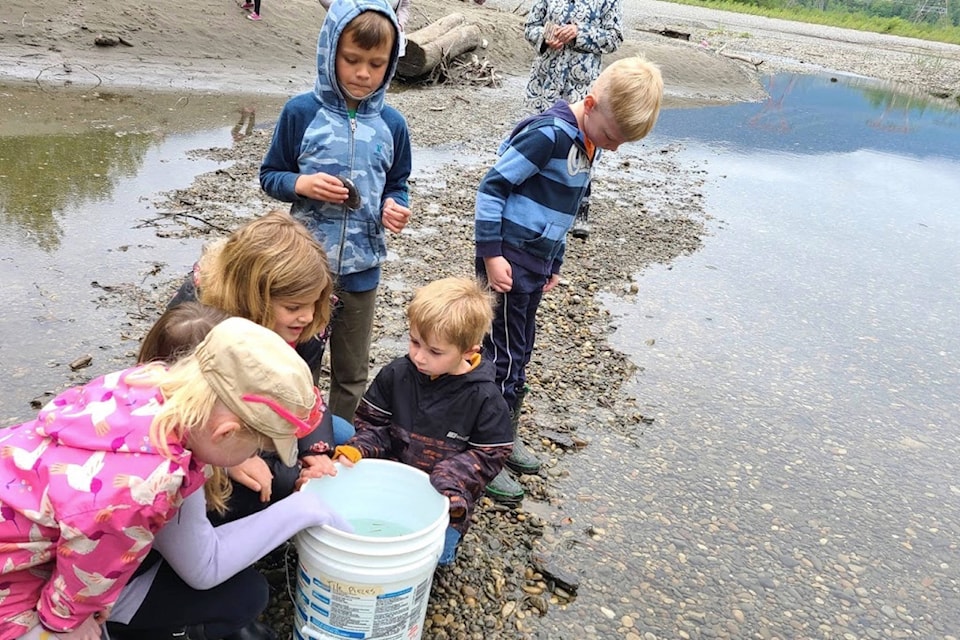With a Halq’emeylem song in the air and a bounty of life lessons, Agassiz Christian students watched 30 salmon fry begin their journey to the sea.
Agassiz Christian kindergarten-first grade teacher Melanie Victor said her students participated in the Salmonids in the Classroom program. This program allowed students to observe 30 coho salmon eggs starting in January, caring for the hatchlings until they grew up into fry in March. In late April, it was time to release the fry at Cheam Fishing Village.
Students sang a song in Halq’emeylem, the traditional language of a number of First Nations in the Fraser Valley.
From 2017 to 2019, the Cheam First Nation worked to restore a portion of the salmon spawning habitat along Tseatah along the Agassiz side of the Fraser River. Efforts included the planting of 700 new indigenous plants grown in a local nursery and the removal of sediment and gravel to create a better environment for chum salmon and placing woody debris in a side channel to allow for resting and rearing areas for salmon, sturgeon and similar species.
Since the 1980s, Salmonids in the Classroom, a Fisheries and Oceans Canada program, has educated students in respecting and protecting local ecosystems. The program provides everything needed to create a salmonid habitat, including aquarium equipment and educational resources.
On the very same day Agassiz Christian students released their fry into the Fraser River, the Miami River Streamkeepers Society released 5,000 chum salmon fry into the Miami River. The three-week-old chum came from the Chehalis River Hatchery and spent a few days imprinting on the Miami River before beginning their own journey to the ocean.
MRSS partners with the village of Harrison Hot Springs on local restoration projects, including removing invasive plants and planting native plants to provide food, shade and shelter for local aquatic life.
For more information on the Streamkeepers society, visit www.miamiriverstreamkeepers.ca.
@adamEditor18
adam.louis@ ahobserver.com
Like us on Facebook and follow us on Twitter.
